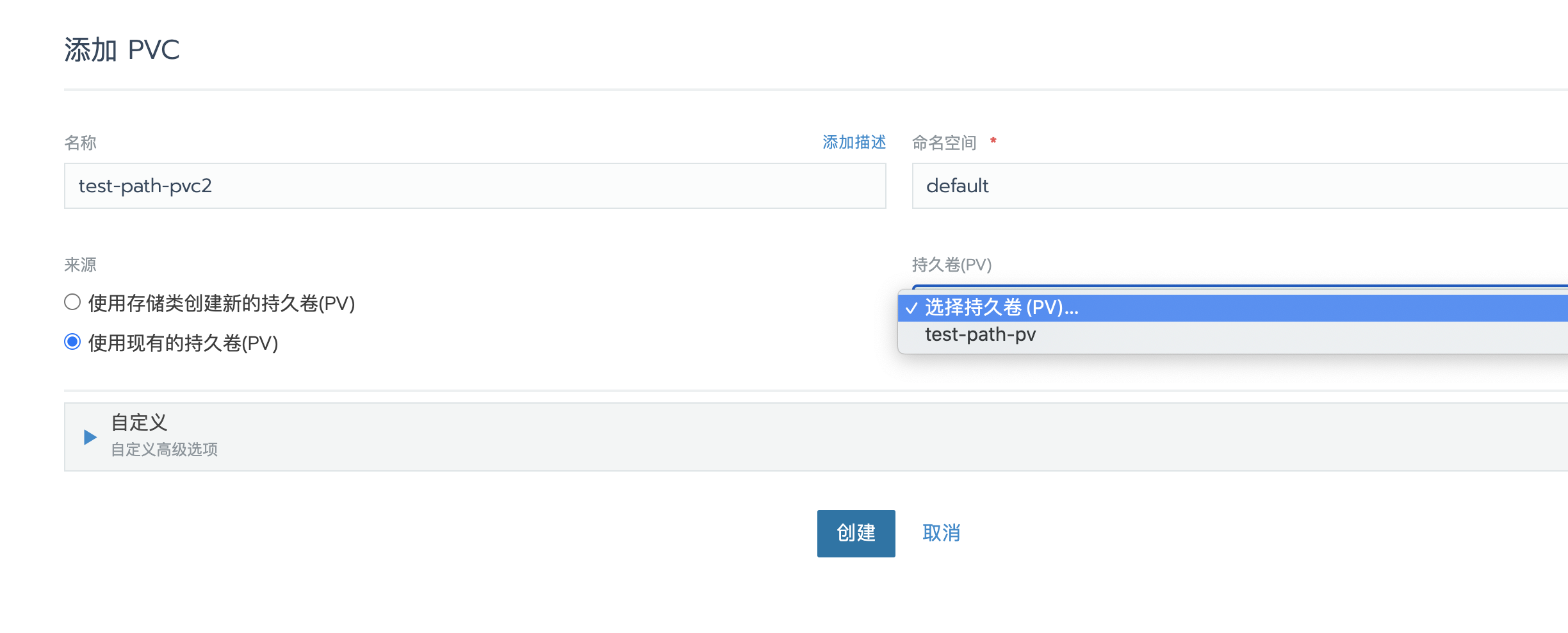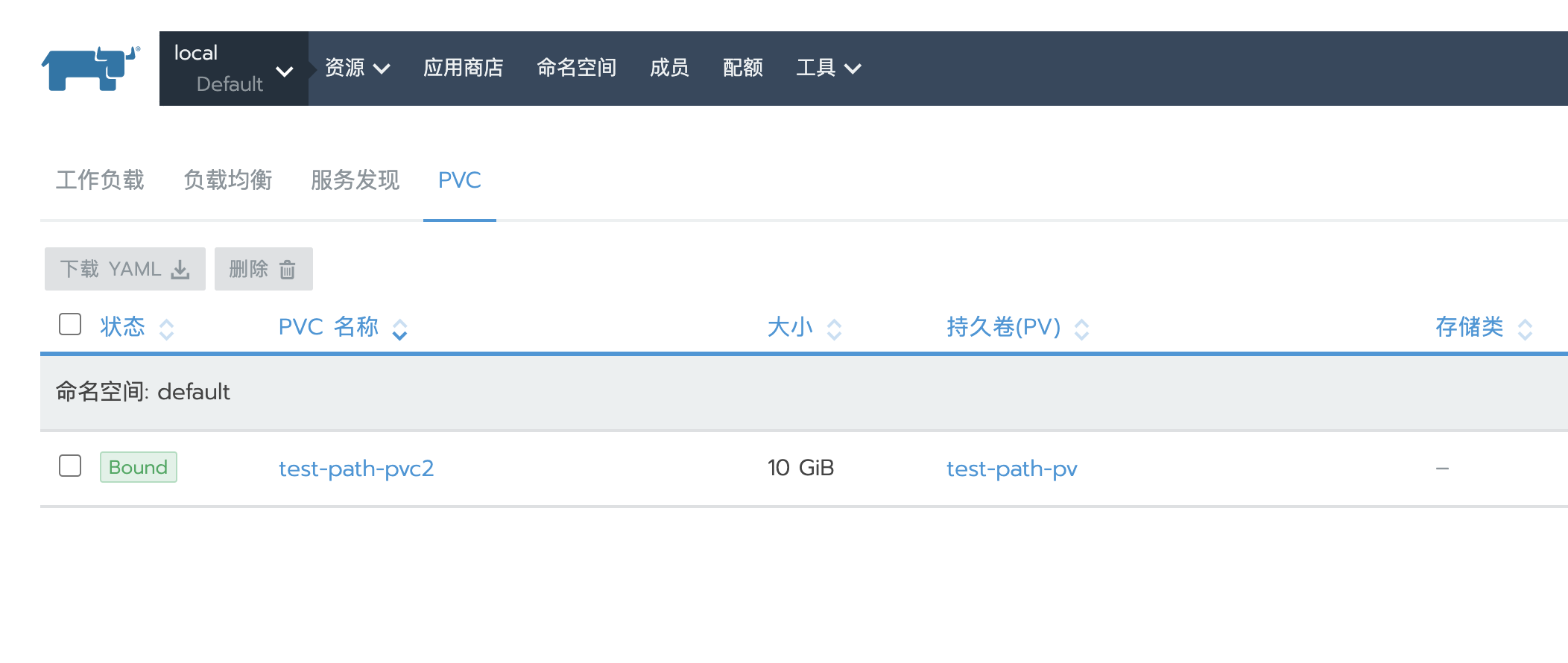复用 Released 状态的 pv
本文永久链接: https://www.xtplayer.cn/kubernetes/reuse-released-pv/
PV 回收策略
当用户不再使用其存储卷时,他们可以从 API 中将 PVC 对象删除,从而允许 该资源被回收再利用。PersistentVolume 对象的回收策略告诉集群,当其被 从申领中释放时如何处理该数据卷。 目前,数据卷可以被 Retained(保留)、Recycled(回收,Recycle 已被废弃)或 Deleted(删除)。
保留(Retain)
回收策略 Retain 使得用户可以手动回收资源。当 PersistentVolumeClaim 对象 被删除时,PersistentVolume 卷仍然存在,对应的数据卷被视为”已释放(released)”。 由于卷上仍然存在这前一申领人的数据,该卷还不能用于其他申领。 管理员可以通过下面的步骤来手动回收该卷:
- 删除 PersistentVolume 对象。与之相关的、位于外部基础设施中的存储资产 (例如 AWS EBS、GCE PD、Azure Disk 或 Cinder 卷)在 PV 删除之后仍然存在。
- 根据情况,手动清除所关联的存储资产上的数据。
- 手动删除所关联的存储资产;如果你希望重用该存储资产,可以基于存储资产的 定义创建新的 PersistentVolume 卷对象。
删除(Delete)
对于支持 Delete 回收策略的卷插件,删除动作会将 PersistentVolume 对象从 Kubernetes 中移除,同时也会从外部基础设施(如 AWS EBS、GCE PD、Azure Disk 或 Cinder 卷)中移除所关联的存储资产。 动态供应的卷会继承其 StorageClass 中设置的回收策略,该策略默认 为 Delete。 管理员需要根据用户的期望来配置 StorageClass;否则 PV 卷被创建之后必须要被 编辑或者修补。参阅更改 PV 卷的回收策略.
参考:https://kubernetes.io/zh/docs/concepts/storage/persistent-volumes/#reclaiming
准备测试 pv 和 pvc
点击 集群|存储|持久卷,点击右侧添加 pv:
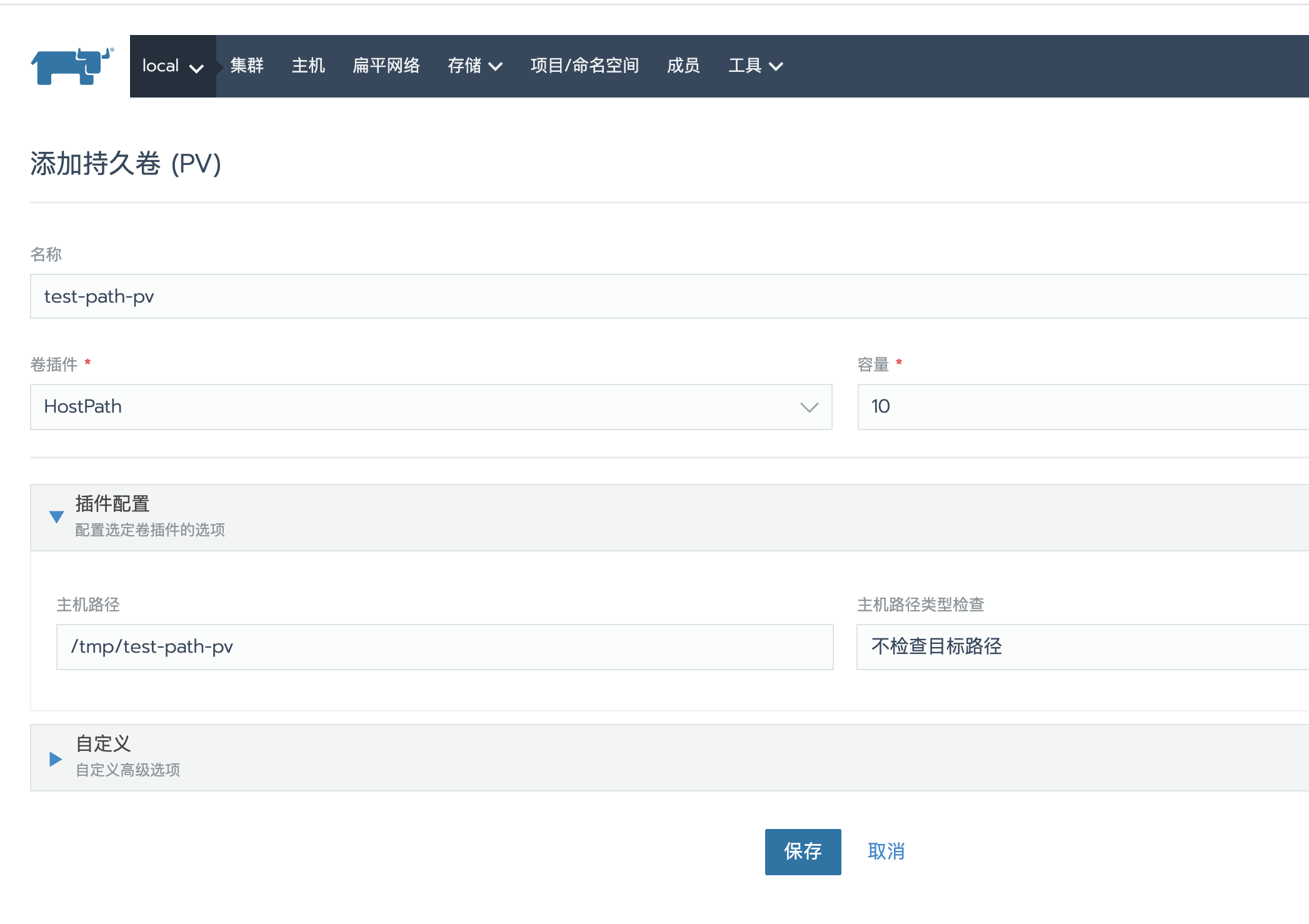
进入任意项目,点击 PVC,然后点击右侧 添加 pvc :

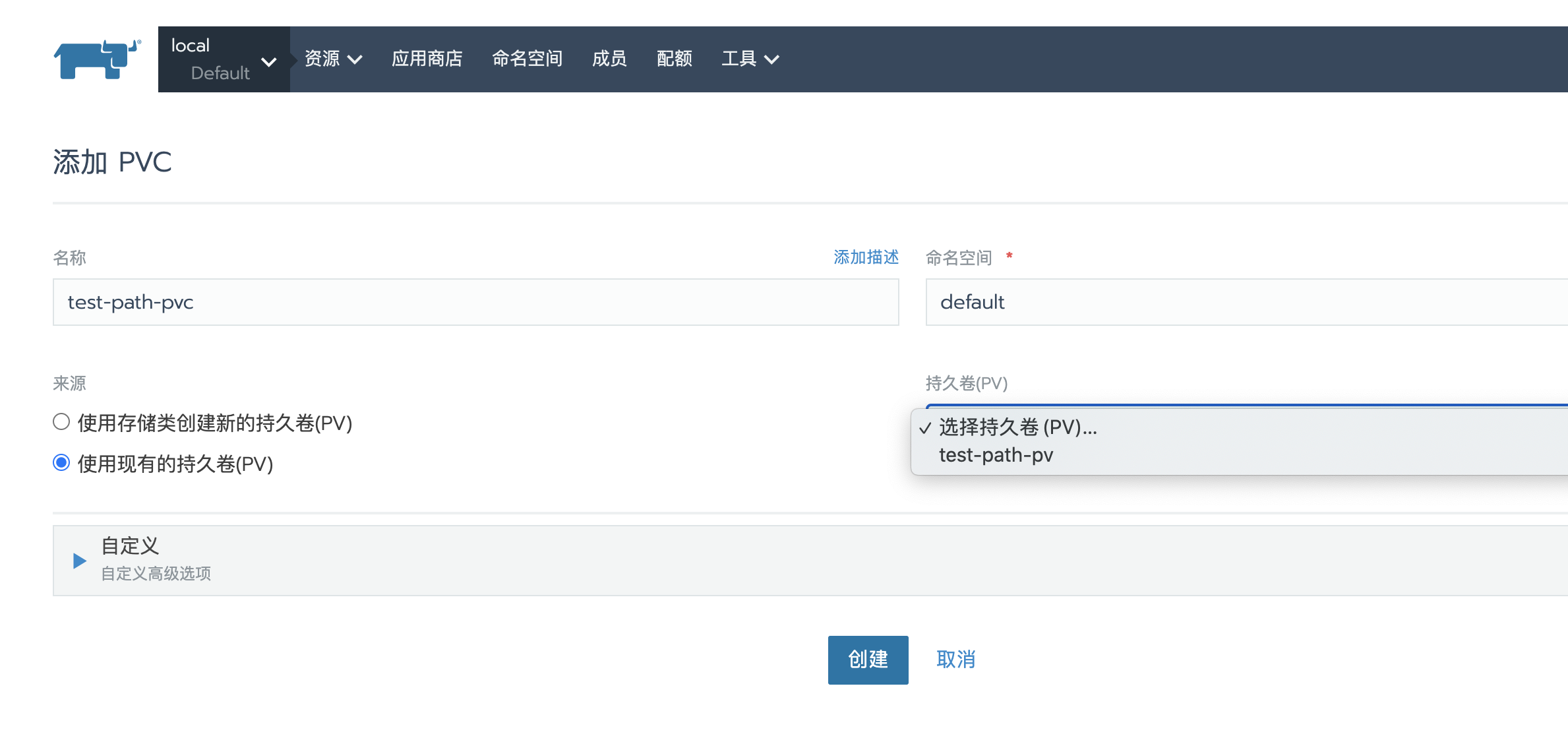

通过命令查看 pv 和 pvc yaml 配置
pv
hxl@rancher:~$ kubectl get pv test-path-pv -oyaml
apiVersion: v1
kind: PersistentVolume
metadata:
annotations:
field.cattle.io/creatorId: user-wf5x7
pv.kubernetes.io/bound-by-controller: "yes"
creationTimestamp: "2020-12-08T11:17:06Z"
finalizers:
- kubernetes.io/pv-protection
labels:
cattle.io/creator: norman
name: test-path-pv
resourceVersion: "24187470"
selfLink: /api/v1/persistentvolumes/test-path-pv
uid: 99f719ba-3314-48f3-9473-11e0b19a8806
spec:
accessModes:
- ReadWriteOnce
capacity:
storage: 10Gi
claimRef:
apiVersion: v1
kind: PersistentVolumeClaim
name: test-path-pvc
namespace: default
resourceVersion: "24187465"
uid: 88a75ff5-232a-44d5-8bbd-933fb325b80f
hostPath:
path: /tmp/test-path-pv
type: ""
persistentVolumeReclaimPolicy: Retain
volumeMode: Filesystem
status:
phase: Boundpvc
hxl@rancher:~$ kubectl get pvc test-path-pvc -oyaml
apiVersion: v1
kind: PersistentVolumeClaim
metadata:
annotations:
field.cattle.io/creatorId: user-wf5x7
pv.kubernetes.io/bind-completed: "yes"
creationTimestamp: "2020-12-08T11:17:57Z"
finalizers:
- kubernetes.io/pvc-protection
labels:
cattle.io/creator: norman
name: test-path-pvc
namespace: default
resourceVersion: "24187481"
selfLink: /api/v1/namespaces/default/persistentvolumeclaims/test-path-pvc
uid: 88a75ff5-232a-44d5-8bbd-933fb325b80f
spec:
accessModes:
- ReadWriteOnce
resources:
requests:
storage: 10Gi
storageClassName: ""
volumeMode: Filesystem
volumeName: test-path-pv
status:
accessModes:
- ReadWriteOnce
capacity:
storage: 10Gi
phase: Bound
在 pv 的 spec.claimRef 可以看到对应 pvc 的具体信息,重要的有 name、namespace、uid。
测试删除 pvc

因为 pv 的 persistentVolumeReclaimPolicy 属性为 Retain,在删除 pvc 后 pv,会自动保留,所以 pv 状态变为 Released。

编辑 pv
为了 pv 可以重新被挂载,需要执行 kubectl edit pv test-path-pv 命令,清理 spec.claimRef 中的内容,以使 pv 成为可用状态。
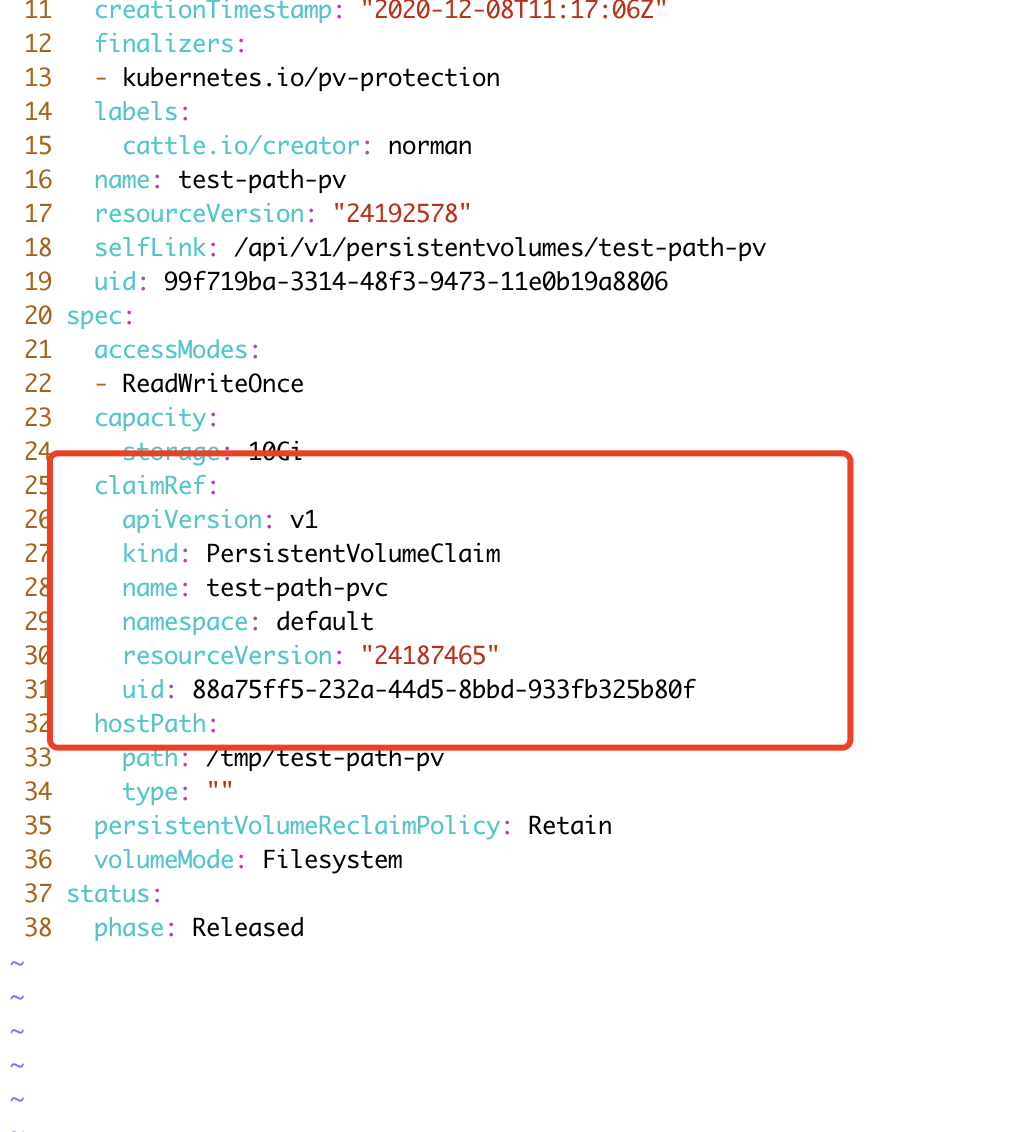

也可以执行以下命令去快速清除 pv 的 claimRef:
kubectl patch pv <pv-name> -p '{"spec":{"claimRef": null}}' |
重新创建 pvc
进入任意项目,点击 PVC,然后点击右侧 添加 pvc
